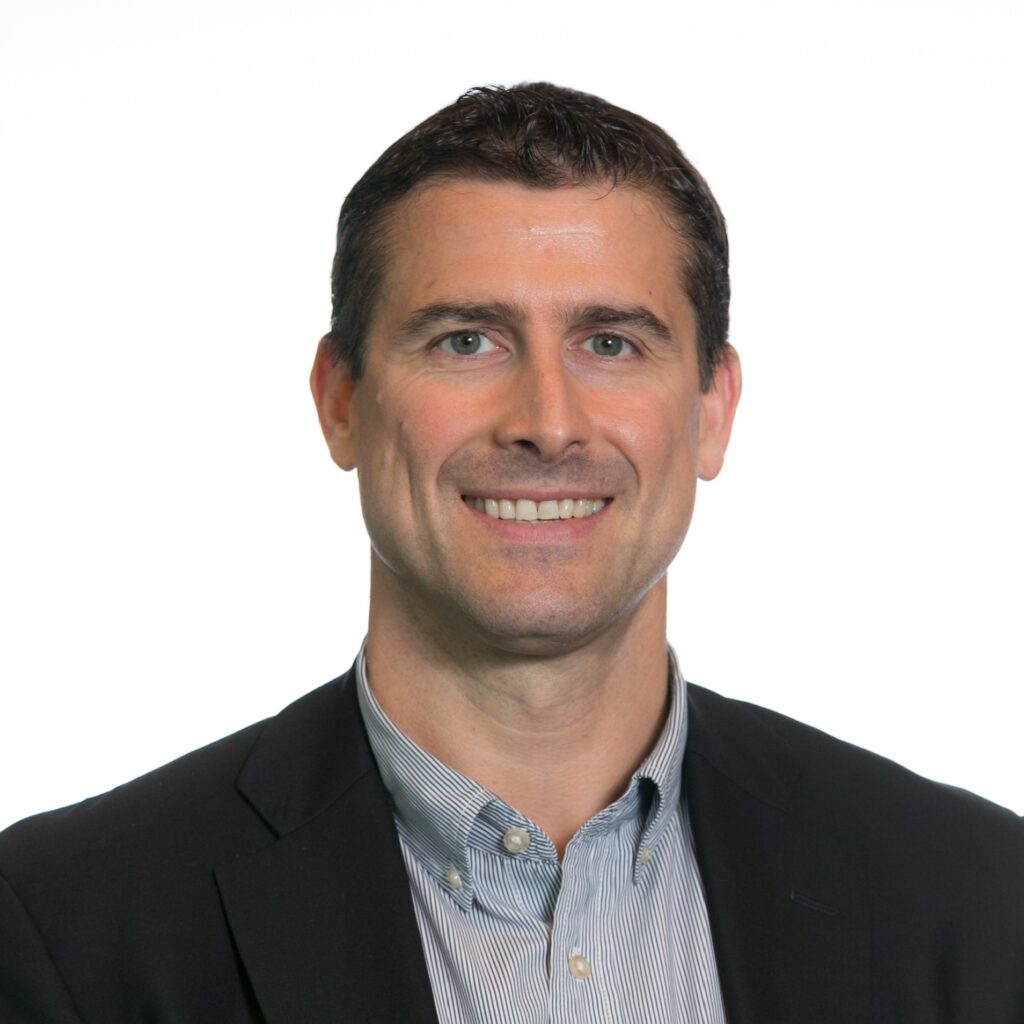Episode 1 of the Medical Affairs Unscripted podcast series recorded by Zipher, now part of Lumanity
Peg Crowley PhD, MBA meets with Dan Hennessy PhD, MBA, Vice President of Strategic Excellence at EMD Serono to discuss a fresh look at the complexity of the matrix of stakeholders who play a critical role in the patient care cycle, including the layers of individuals in the clinics and hospitals, in healthcare economy, and in advocacy societies.
Drs Crowley and Hennessy, who combined have about 35 years of experience in industry, address the importance of maintaining scientific exchange between the stakeholders and medical affairs organizations during a pandemic, which has created an unanticipated interruption to former methods of engaging with stakeholders. They offer an overview of the challenges with the current channels of communication as well as suggestions on how to maintain previously established relationships and how to navigate the development of new engagements in our current landscape of communication. They also discuss the key risks of not engaging with stakeholders, and not building and maintaining those relationships effectively. Lastly, they examine the future of communication with stakeholders in the short-term and long-term and how to adapt with this constantly changing environment during a pandemic.
Podcast Series: Medical Affairs Unscripted
Hosted by Dr Peggy Crowley-Nowick, in Medical Affairs Unscripted we explore a range of topics related to the strategic role of medical affairs from the perspective of industry experts. Through these conversations with our guests we will share first hand experience to provide the listener with insights and knowledge about the evolving role of medical affairs.
Podcast transcript
Peg Crowley-Nowick 0:26
Welcome to the first season of medical affairs unscripted. I’m your host, Peg Crowley-Nowick, president and founder of Zipher Medical Affairs, a full-service consulting firm. During this podcast, we’ll explore a range of topics related to the strategic role of medical affairs from the perspective of industry experts. Through these conversations with our guests, we will share firsthand experience to provide the listener with insights and knowledge about the evolving role of medical affairs. Please stay tuned at the end of the podcast to learn more about Zipher. Today, I’m excited to have Dan Hennessy on our podcast. Dan is Vice President of Medical Affairs at EMD Serono. Welcome, Dan, to Medical Affairs Unscripted.
Dan Hennessy 1:24
Thank you, Peg. Thanks for having me today.
Peg Crowley-Nowick 1:27
Happy to have you. We’ve had the opportunity to work together for many years. And it’s a pleasure to have a chance to talk to you about a topic that I think is very important, especially today. We are here to talk about reaching stakeholders, and one: Who are the stakeholders? How important is it to engage and have scientific exchange with medical affairs stakeholders? And what happens if you can’t do this? Well, is there an impact? And because we’re holding this conversation in a time when most people are in isolation, and it’s very challenging to get out and visit with some of those stakeholders? We’d also like to talk about what are the some of the alternative channels? And how would you approach this type of engagement with stakeholders.
Dan Hennessy 2:14
So, they’re all very relevant topics and near and dear to my heart.
Peg Crowley-Nowick 2:18
Excellent. So, before we start, I’d love it if you could give a little bit of your background.
Dan Hennessy 2:23
Sure, happy to. I’m probably one of a sizable minority that that started off from an academic standpoint and liberal arts background, where I studied history before moving on to graduate school, into the sciences where I pursued a PhD in pharmacology. I was also part of the sizeable minority that knew I didn’t want to stay within academia. And in my last year, year and a half as I was finishing up my PhD program, I started working at a CRO and had my first exposure to clinical research, project management, clinical monitoring, which also involves field engagement with clinical investigative sites. It was during this time that I also started to learn about medical affairs, it was this intriguing component of industry that I didn’t know very much about, but I knew I was intrigued by it. And I had a great opportunity to join a company in a medical affairs capacity as a field-based medical science liaison with a focus in oncology, and that’s where I got my start in medical affairs industry. By and large, much of my focus has been in oncology and has been in field and stakeholder engagement. Yet with that said, had the opportunity to grow in different roles, to build and lead entire departments, specialize in medical communications, work both in global multinational companies and U.S. focused companies. In addition to roles that focus on strategy and strategy development. In my current role as the Vice President of Strategic Excellence at EMD Serono, my role is really to enable and facilitate strategy development across our geographies, across our innovative specialty medicine areas of neurology, immunology, oncology, in addition to fertility and endocrinology.
Peg Crowley-Nowick 4:33
Well, you have a broad perspective that you bring to this conversation, not only knowing and understanding, well, the MSL role, but understanding the overall concept of medical affairs. And I think that that’s an important aspect because many times when I speak with people, they say, when we’re talking engagement, they’re only thinking about MSLs rather than thinking about the entire medical organization and the broad concept of stakeholders. So, just before we start our “real” conversation, I’d like to just ask you the one question I ask all of our guests. What story could you tell me? What was the one time that you were engaged in an experience in medical affairs — that was that “aha” moment, that time when you really learned something in your role, and you really felt like medical affairs has an important role; And “I really enjoy participating in this.”
Dan Hennessy 5:26
Yeah, absolutely. I’ll go with I’ll go with a story that happened early on. And it took me a little while to have that first “aha” moment. As I mentioned, as I started in this company, as an oncology, medical science liaison, I was barely two years out of my academic work. And here I was joining a group in the field that consisted of immunologists, clinicians, molecular biologists, and the remit was engaging with clinicians and academics in New England. So, I had responsibilities over Yale, Dana Farber, and other very esteemed institutions. And I learned pretty early on that I succeeded in building those critical relationships when I use my two ears much more often than I use by mouth. So, it was about asking good questions, and really listening, listening with your whole body and some of those active listening skills. I had an opportunity to start to build a relationship with a young physician scientist at Dana Farber, that was also one of our investigators for a company sponsored trial. And through our conversations, it became clear that she became interested in our therapeutic, which was a monoclonal antibody used to treat chronic lymphocytic leukemia. It became apparent that she saw some challenges associated with the dosing that she thought could be improved. And it was an opportunity for me to actually shift positions and start to share some of my expertise in clinical pharmacokinetics — And being able to sit down and walk through aspects of our investigators brochure and the preclinical and pharmacological profile of our asset, lead to some really interesting ideas and hypotheses about how you might administer this medication to remove some of the infusion related toxicities that were experienced when this was injected intravenously. And, to make a long story short, through those conversations and hypotheses; we ended up supporting an investigator sponsored trial that tested the hypothesis that you could give this drug Sub-Q and in a much more compressed dosing format. So, the entire evolution of that conversation was many, many months. And going from that initial meeting, where I was thinking, how can I possibly add value to this young, rising star physician scientist, to actually having a study up and running. It wasn’t published til many, many years later. But I understood through that process, once we had that study approved, that we were onto something; and by establishing some baseline trust, that opened the door for a trusted peer conversation. We were supporting the conduct of research that was going to support the scientific literature, whether the study turned up being positive or negative. I’d have to say that was my first “aha” that I realized that through medical affairs, you can add value and make an impact on a treatment that would eventually potentially have an impact on a patient.
Peg Crowley-Nowick 8:50
So, true scientific exchange?
Dan Hennessy 8:52
Yes.
Peg Crowley-Nowick 8:53
Providing information back and forth, and then making a difference potentially in patients’ lives. That’s really a great “aha” moment. So, thank you for sharing that. Today, then, I’d like to talk a little bit about the business objective for Medical Affairs, which in my perspective, the business objective is to provide the data, the information necessary so that the stakeholders can make informed decisions. I’d like to ask you, “Who are the stakeholders for medical affairs?” This is a much more complicated question than maybe somebody would have said 10 years ago, but what are your thoughts?
Dan Hennessy 9:32
Exactly, when I first started, I would have said the specialists — let’s focus on the specialist. They are the key opinion leader or in the academic setting or in the community. They’re the one that is treating our patient and making that therapeutic decision. So, we’re a pharma company — we develop drugs, so shouldn’t we be focusing on that stakeholder and not to diminish how important that stakeholder is today, but in the last 15, 20 years, the practice of medicine has become much more complex in the US. And decisions are increasingly being made within more complex ecosystems. So, you do need to start to think about more organized systems of care. And if you were to follow a patient diagnosis and treatment, you realize that they’re navigating through primary care into specialty care. And they are interfacing with, not only physicians specialists, but allied health professionals and other multidisciplinary specialists. So, in the oncology world, there’s pathologists and surgeons that are involved. Of course, we have allied health professionals, such as nurses that are really in the front lines of operating a given site of care, pharmacists that have a much higher bar of complex molecules, both small molecules and complicated gene therapies and biologics. So, when you start to think about the stakeholders, from that standpoint, it’s really expanding quite a bit. And that’s really just with respect to the delivery of care, we also need to think about the healthcare economy and, as a society, how we pay for health care. So, that’s when population-based decisions come into play. And payers and other executives that may work within the health system that oversee formulary management and drug utilization are also very important stakeholders. So, in short, there’s really a much more voluminous and complex set of stakeholders that are absolutely required to work in concert, so that a patient can be identified and diagnosed and put through the care cycle to receive the treatment that they need for their underlying condition.
Peg Crowley-Nowick 12:09
How does the patient fit into the stakeholder pool?
Dan Hennessy 12:14
I am remiss without mentioning the patient, and perhaps there’s an artifact here that as medical affairs professionals, we rarely, if ever, are directly engaging with the patient. There’s a separation there as part of our business model, that it’s really their health care providers that are really managing that interface. However patient advocacy societies has become an interest group that we interact with quite frequently to provide education and support services, some managed by medical affairs, others that are not necessarily managed by medical affairs that may be managed with market access and payer related support services to ensure that patients have access to medications and are able to pay for that care.
Peg Crowley-Nowick 13:16
I assumed that you were thinking about the patient from the very beginning, as you’re talking, you started with the patient journey, which is, of course a critical aspect in this discussion. From my perspective, the discussion about advocacy is probably becoming more and more important because those patients have to make decisions — And if they don’t understand their disease fully, don’t understand some of the differences in the choices that they’re making; they may not stay adherent to the drug, and you won’t get the outcomes that are necessary. So, the ecosystem that you just spoke about is complex, yet each part of it is vitally important for success.
Dan Hennessy 13:57
Absolutely. I would also add that there’s also been a sea change, culturally, in how patients interact with physicians; we think about our parents in that relationship. The patient is usually sitting there and listening to the to the clinician and the expert. Whereas today, a patient or their adult children may come in with 20 pages of printouts. The access to information is now so voluminous, and that can be a double-edged sword — Is it validated information? Is it accurate information? But regardless, patients are much more proactive and empowered these days to come in and drive their own care. So, they’re absolutely not just a passenger in the interventions and care decisions that are made in their course of therapy. So, from that standpoint, another element of the of the stakeholder mix that’s very important.
Peg Crowley-Nowick 14:55
Absolutely. So, when we’re talking about stakeholders — There’s multiple ways of communicating with stakeholders. From a medical affairs perspective, scientific exchange is an important piece of this, making sure that the proper communications are available for the team to use in their engagement, but also the channels of engagement. So, let’s talk a little bit about that. You’ve just mentioned three different stakeholders, three different groups of stakeholders, I should say. Let’s talk about how that engagement occurs today and what your thoughts are on what happens in a situation where we have a major disruption that will force pharma to make some thoughtful decisions on how that engagement will continue, or how the information will be provided so that people can make informed decisions. So, what are what are some of your thoughts on how we’re engaging today? And what’s going to happen in the future?
Dan Hennessy 15:53
It’s a great question. If you were to think about the complexities of channels of communication and the amount of information out there — one way to simplify it, is you go back to a patient physician interface at the core — how is a clinician that’s diagnosing and treating a patient interfacing? Up until two months ago, I would have thought 95% of the time, that is a face-to-face interaction. And that very much forms a certain basis and bias for how we engage as medical affairs professionals, we have internal staff and function that are responsible for scientific communication materials, and through our medical information departments and other communication and publication channels. And then we have field-based scientists that are responsible for engaging at the site of care with clinicians and researchers. So, I think the current disruption and pandemic is really probably accelerated some elements that were already starting to be in play with advancements in technology particularly digital technology. And that absolutely impacts what that interface is going to be. So, again, going back to what might be an interface for a specific transactional question that a clinician may have in making a decision. It’s very easy and simple to think about having a face-to-face interaction or phone call. That’s one of the easiest ways to conceptualize how you could have a tailored interaction for a very specific problem. Yet we know with the volume of information and the size and scope and complexity of organizations, both on the pharma side and at the academic, and clinical sites of care, that may not allow you to get the information out in a timely manner. And that’s where channels such as medical information channels, where there’s a call center, very traditional way of providing a channel for information with standard response letters to frequently asked questions. Nowadays, there’s much more innovative solutions and really a multi-channel framework for communicating information that may involve that medical information response letter, plus, plus and plus, in those pluses could be an interactive iPad tool. It could be a patient infographic, it could even be a patient version of that communication material that’s appropriately worded in language that’s not intended for a physician, but for a patient to understand that in more of a layman’s terms.
Peg Crowley-Nowick 19:08
Could I stop you for just a minute — when we’re talking about medical information, lots of times a physician or an allied health professional calling for medical information needs an answer right away. We know that there’s usually steps that somebody has to go through — sometimes things get escalated, it may be 24 to 48 hours before an answer comes back. What are your thoughts on the practicality of taking 48 hours to answer a question about your drug?
Dan Hennessy 19:38
That doesn’t cut it! If the patient is there and the clinician has a question and they need an answer to make a treatment decision, 48 hours is not going to cut it. So, ideally you have a channel for providing that information in real time. Now from the evidence that I see within our own medical and Information, a sizeable majority of questions that come in, you’ve anticipated that because you’ve done the strategic planning, you know your drug, your asset inside and out. And you’ve really thought carefully and constructed your medical information response letters based upon anticipated questions, because you would have had five, seven years where this molecule is in development, and investigative sites where we’re asking these questions. So, if planned appropriately, it should be the exception rather than the rule that you need to escalate beyond that first step. — And actually, we don’t have an answer to this, and we need to get back to you. So, that’s the first important point. Then the second point, if it’s the minority of cases, how do you get that tailored information disseminated in a timely manner? And that’s another area where having someone physically present is not always feasible. So, that’s where digital channels that could be as simple as a phone call, it could be a FaceTime or video type call, where you would you’d be able to connect a clinician to a medical affairs specialist, that’s perhaps that next step of escalation to provide the answer to that question.
Peg Crowley-Nowick 21:15
So, even coming through medical information direct, then having it pushed off to an MSL or to a medical professional who could answer the question quickly?
Dan Hennessy 21:27
Absolutely, and most call centers would have a mechanism for escalation and triage that, if you don’t have the immediate answer, what is that triage mechanism? Understanding that the answer is timely, companies have been grappling with mechanisms to have that answer in the most efficient timeframe as possible.
Peg Crowley-Nowick 21:53
So, the reason that I’m kind of pushing on the medical information, which seems a little odd when we’re talking about engagement, but I think that that’s one level of engagement, as you mentioned, but how you combine and start to take advantage of the multiple layers of engagement that you potentially have, I think is going to be important. So, if we then shift to the face-to-face engagement, and what that looks like and what it becomes, and how important is it to make a relationship? And if you can’t meet face- to-face with someone, how do you develop a relationship?
Dan Hennessy 22:26
Yeah, very important. So, let’s start with the first — how important is that relationship? Contextually, when we think about medical affairs engagement with decision makers; a clinician in this case — there’s certainly numerous opportunities where there’d be what I call a transactional opportunity: there’s a specific question, the answer, that is, I’d say translational and a relationship would certainly be helpful in exacting that transaction. But it’s not necessary. Just like any e-commerce or software, you can call a call center, even now there’s chatbots — you ask a question, and you might get that answer right away. The second I’d say is more long term. And that’s that is the relationship. And I think that’s critically important. Because scientific exchange is not just about reactively, waiting for questions to come about to answer a specific question. I think the advancement of science and the advancement of innovative medicine involves a very iterative process where expertise is shared and pooled. And as, as members of medical affairs, NF and a pharmaceutical manufacturer, we have a tremendous amount of expertise on our technology in our science, and having mechanisms by which we are proactively engaging with physician, physician scientists and allied health professionals. It in fact allows us to understand what are their key challenges in their clinician patient interface? What are the key research challenges that they have, so that we can anticipate some of those challenges, pull insights from the conversations we have and actually drive our tool development drive our research, program development, and none of that happens without a relationship? You’re not going to going back to my anecdote. It was the fifth or seventh meeting where we had established the trust where that clinician was comfortable enough to let her hair down so to speak and say, hey, listen, I your drug I think is very active. But I think we get this this tremendous cytokine storm that I have some patients that are having these tremendous histamine related or cytokine type reactions and high fevers, and here’s an issue. I’m really thinking about this That level of dialogue does not happen without the relationship. So, it’s absolutely critical both on the research side, but even in in the advancement of how to apply an existing therapeutic in the real world. The applications are in the examples, I think go well beyond just the research side. And the relationship is absolutely critical for many of these.
Peg Crowley-Nowick 25:25
Any thoughts on what happens in a situation where you can’t get out there face-to-face and meet with somebody, and yet you need to develop that relationship. So, if you have those relationships, you can probably immediately quit turn those over into digital and build upon those relationships. But what happens if we change the model and are no longer traveling no longer going out in visiting with people one-on-one on a regular basis? Maybe it happens at congresses, maybe it happens a couple of times a year and in a different setting? But how can you create the same type of relationship and bring the value? What are some of the mechanisms that you’ve been thinking about? Because I’m sure this is on everybody’s mind today?
Dan Hennessy 26:13
Sure, sure. I would first say if anyone tells you they have the answer (both laugh) — I’d ask some serious questions. We are in the acute phase of a massive disruption — And how we do business and how we engage with a multitude of stakeholders right now have challenges and fears to their site of care and their operations that supersede many of the normal day to day business, that supersede even the conduct of research on deadly conditions. Right now, it’s really about safety and protecting their staff protecting their patients, and maintaining the operations of their sites of care so that patients can be cared for. So, I’d say first and foremost, go into this question with a high dose of humility, and understand where your relationship may fit into their overall set of priorities. What we’re finding both with our medical director teams and Field Medical is that where we have established relationships, the majority, and I would say, a slight majority, maybe I would guess somewhere between 50 to 75%. I think this is also validated by the recent MSL society benchmarking report 50 to 75%, expressed a willingness that they will convert a meeting that was intended to be face-to-face to a virtual meeting. And that can be as simple as an iPhone, that could be a video chat, zoom, and other video functions are being adopted at a drastically increased pace than they were three, four months ago. So, those channels do exist — At the same time, that overall activity level has probably dropped in half, and sometimes more, because people are busy. They have other priorities. So, long story short, we don’t have enough data to fully understand what that relationship maintenance looks like, in the longer term. Now to the second the other aspect of this, how do you build a relationship in this environment? That is, that’s, I’d say, more of a conundrum. What I’m observing in this acute phase, and I would even just place this on my own behavior when it comes to different service providers and groups that I work with, we’re also scrambling and meeting quite a bit to try to determine how we maintain business continuity, how we maintain the safety of our staff and employees, how do we operate in this world? And what does the return to normal look like? And that’s really consuming a lot of our, our time and energy and first and foremost, it’s the human cost, the human impact of a pandemic. That’s first and foremost. So, as I’m approached by different stakeholders, if I have a preexisting relationship that very much drives my willingness to engage, and it may be, “Thanks for checking in. Let’s maybe touch base in four to six weeks.” If there’s something very specific to the issues I have at hand, “Let’s have a 15-minute call or FaceTime?” But I have less time for that cold call right now. And I think as medical affairs professionals, for instance, if you have a new medical director or new MSL in a territory, that timeframe where you would normally expect for them to really get comfortable in a territory — and leading those engagements and building those relationships — I think at least in the acute phase, there’s going to be massive headwinds to doing that. And I would expect that it would take longer; let’s think of the next six to 12 months as a timeframe for return to normalcy, it’s going to take longer to do that. And, and some of the best practices would be mentorship of other people within the organization that may have the preexisting relationship and relying on those things…
Peg Crowley-Nowick 30:37
Can I stop you there, because I think that that is a very key statement that you just made, is the fact that you should turn to other people in your organization, who have that relationship, in order to make the introduction to make the pass off, to put you in a place where you’re respected by somebody that they trust. And then hopefully, that starts to open the relationship. I think that’s a piece that a lot of people overlook when they’re starting out. Because this is true, whether you’re in the middle of a pandemic, or you’re just starting out in a new job is how to make that first relationship and use some of the people around you to get that started. But I say that also thinking about the fact that going virtual and assuming that’s any different than picking up the telephone and calling somebody we know how challenging it is to pick up the telephone and call somebody. So, a virtual meeting, other than the fact that I can see you doesn’t necessarily change that change the dynamic of what’s currently going on. But if we have a situation where people have been away from having regular contact with the pharmaceutical industry, engaging with medical affairs, whether it’s MSLs, or medical directors, is it possible that you’ll have a situation where people don’t want to engage as frequently and are expecting to get their information through other channels? Can you think of other ways that medical could help to supply this information? Is this a situation where CME or independent medical education becomes more important to us again? Is this a situation where there’s more social media writing and more white papers? More communication through other channels?
Dan Hennessy 32:20
Yeah, my reaction when you opened — you mentioned that we’d be talking about what are some of the risks of not engaging the right way. One of the risks that I that I saw before the pandemic, is with the multitude of communication channels, up-to-date websites, peers, medical education, and other venues. You know, when there’s a lack of tailored information, when you’re not solving for stakeholders’ issues, there’s other sources of information out there. So, our biggest risk of not engaging appropriately is disintermediation. That means you are not the intermediary for that information, they are going elsewhere for that information. And I in fact, I see that as that would be a tragedy. And I think that would be a missed opportunity, given the fact that industry does possess a huge pool of expertise in scientific, the underlying biology of disease, and the development of systemic therapies to intervene in disease. It’s really part of our scientific training. And one of the reasons why we have medical affairs departments, because there’s an expertise that can really be an ambassador to communicate that information, you know, very specific to those technologies and those disease states where the company is able to share that information. So, I think a key risk if we don’t figure this out and do this well, we risk increasing that disintermediation. And I do think there could be potential detriment in terms of information that could be used to make a treatment or coverage decision. It could be a detriment to the degree of innovation, because science is a team sport. When 40,000 clinicians go to a major Congress, there’s 10,000 people from industry, and there’s thousands and thousands of meetings, and that’s a team sport. There’s a sharing of knowledge. And I think that that would be an unfortunate casualty of the pandemic, if we were to lose that. And why I’m optimistic is that I don’t think that that we are the only ones that that would recognize and fear that as, as industry professionals, I think, I think academics and clinicians also recognize that as well. So, everyone agrees that that we don’t know exactly the duration and severity of this as we’re in the acute phase. But right now, what we can do is we can, we can watch, we can observe, we can plan for what that return to normal looks like. And even taking small steps, as you’re shifting some of those engagements from a live meeting — Why not try the video? Harvard Business Review had a wonderful article earlier this week on how to establish your presence and some of the etiquette of a video meeting. And while it doesn’t replace the face-to-face element, I know that as I’m, I’m looking at you now on a video screen, I feel more connected to you. Yet that Harvard Business Review article told me that I should be looking at the camera as I speak to you because just like the anchors do, it looks kind of It looks kind of odd if you’re glancing around left and right. So, there’s steps that we can take to maximize the impact of our communication in a virtual format that I think makes the it makes the engagement more meaningful than a telephone call, or certainly a text, but yet does not replace that face-to-face meeting, we’ve evolved over hundreds of thousands of years to have an antenna and radar on emotional cues and body language cues. We can’t seek to capture all of that in digital formats. But having some good etiquette and practices in a video format, I think seeks to retain some of those, and will have the impact of preserving the quality of those interactions.
Peg Crowley-Nowick 36:41
Those points are very important. Dan, I encourage everybody to always turn on the video camera, look at the person that you’re speaking to. So, I would have said look at the person versus the actual camera, but I’m not even sure always where the camera is. Maybe that’s the part to be a little bit more clear on. So, Dan, where do we go from here?
Dan Hennessy 37:04
Well, Peg, I was reading an editorial from The Lancet Oncology and I’ve referred to this quote numerous times this week, because they wrote it better than I can say it, “With the situation constantly changing, all we can do for now is wait, watch and adapt as best we can until the immediate and long term effects of the pandemic fully materialize.” I think if we accept the humility of that statement that we just don’t know, and exhibit humanity and understanding that people’s lives, their health, and economic lives are going to be disrupted. And as business leaders, if we seek to actively listen, solutions oriented, that’ll drive the path forward. And we will innovate and adapt and see our way to what the new normal looks like. And I’m convinced that we will get on the other side of this. And there will be a new normal of how we engage as medical affairs professionals with the stakeholders that we talked about today.
Peg Crowley-Nowick 38:04
I think that this conversation has been very informative from the perspective of who the stakeholders are, how the disruption may be impacting Medical Affairs and that type of engagement. But in the short term, what the virtual meeting can mean, in the longer term, I think how we make that combination of face-to-face engagement, and virtual potentially bringing in different levels and social media, bringing in certain types of virtual roundtables, things being short and fast, may be very important for success in the communication and the continued scientific engagement. If you can’t build those relationships, taking advantage of somebody else, making an introduction, but also potentially having shorter introductory meetings, to get things started and kick it off and build a little bit of a relationship so that you can then hold longer, more intense scientific exchange. I think this has been very helpful. And hopefully our audience will understand now some of the direction and in the focus that that the pharmaceutical industry may have as this next six months to a year. We continue to see what the disruption means to the overall pharmaceutical industry. Dan, thank you very much for your time, and I really appreciate having the opportunity to talk with you.
Dan Hennessy 39:27
It was a pleasure.

Episode guest
Dan Hennessy PhD, MBA
Vice President of Strategic Excellence at EMD Serono












